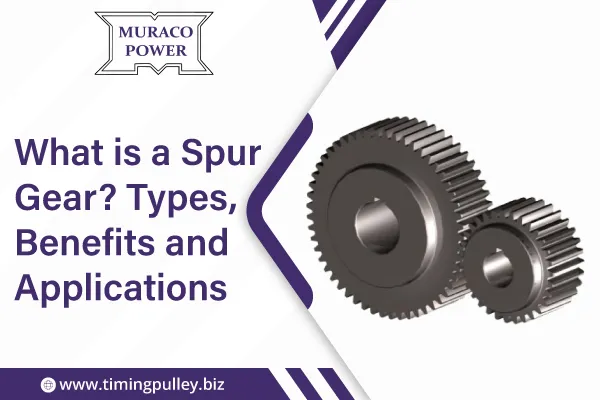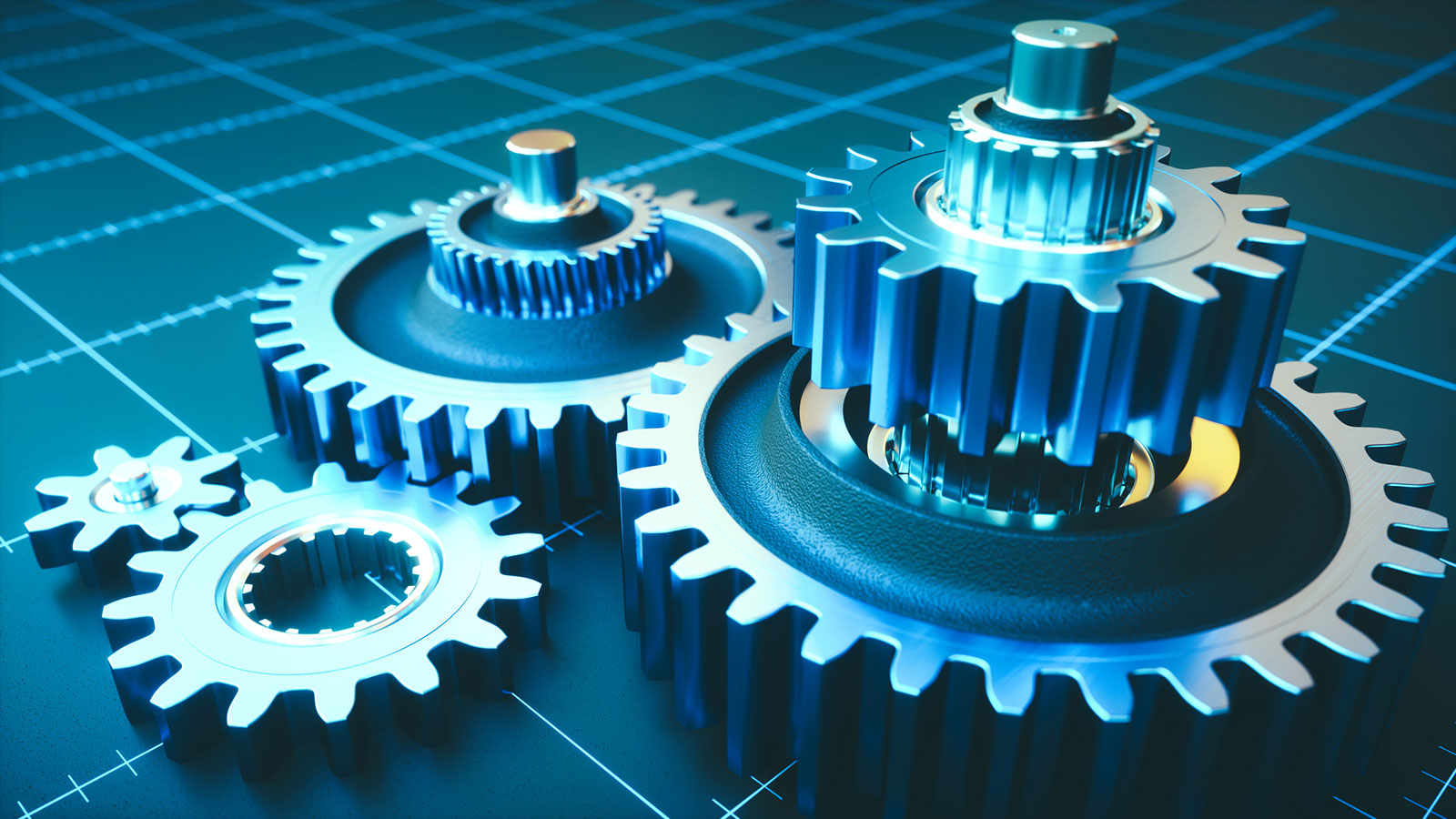
| We Offer | |
|---|---|
| What is a Spur Gear? Types, Benefits and Applications | |
| Call Now | +91-958-682-3032 |
| +91-958-682-3032 | |
| Eligible Region | India |
| Category | Spur Gear |
| Payment Methods | Cash, UPI, Net Banking |
In mechanical systems, gears are essential components that transfer power between different parts of a machine. One of the most widely used types of gears is the spur gear. It plays a key role in transmitting motion and power efficiently, making it indispensable in industries like automotive, manufacturing, and robotics. Spur gears have straight teeth that mesh directly with another gear, ensuring smooth and efficient power transmission. Here we will explore the different types of spur gears, such as straight, helical, and internal spur gears, highlighting their specific benefits and applications. Whether in industrial machinery, conveyors, or power generation systems, spur gears are a cost-effective, reliable choice for many applications. By understanding their functionality and advantages, businesses can select the right type of spur gear for their specific needs and improve the performance of their machines.
What is a Spur Gear?
A spur gear is one of the simplest and most widely used types of gears. It is a cylindrical gear with straight teeth that are parallel to the axis of rotation. These gears mesh with each other, allowing for the transmission of motion and torque between shafts that are parallel to each other. Spur gears are used in countless mechanical applications due to their efficiency and reliability. A spur gear is made from a toothed wheel that combines with another gear or a toothed rack. The teeth of the gear are cut in a straight line and are parallel to the axis of rotation, allowing for direct engagement with other gears.
How Spur Gears Work
Spur gears work by interlocking their teeth with another gear in the system. When one gear is powered by a motor or another source, it rotates, transferring motion and torque to the meshing gear. This allows the machinery to perform specific tasks, such as adjusting speed, changing direction, or controlling the force applied to different components. The simple yet efficient design of spur gears makes them an essential part of many mechanical systems, ensuring smooth and reliable operation in applications ranging from automotive to industrial machinery.
Key Components of a Spur Gear
The key components of a spur gear include:
- Teeth: These are the most important part of the gear, where the meshing with another gear takes place.
- Pitch Circle: This is the circle which establishes the size of the gear & the distance between the teeth.
- Face Width: This is the distance between the two sides of the gear teeth.
- Pressure Angle: The angle formed between the line of action and the tangent to the pitch circle.
- Root and Tip: The root is the bottom of the gear teeth, while the tip is the outermost part.
Types of Spur Gears
There are several types of spur gears, each designed to serve different purposes and improve the performance of machinery in specific applications.
Straight Spur Gears
Straight spur gears are the most common type. Their teeth are square to the axis of movement. These gears are simple, dependable, and straightforward to build. However, they generate more noise and have higher wear rates compared to other types of gears.
Helical Spur Gears
Helical spur gears have teeth that are cut at an angle, which results in smoother operation and quieter performance compared to straight spur gears. The angled teeth allow for gradual engagement with the meshing gear, reducing shock loading and wear.
Double Helical Spur Gears
Double helical spur gears have two sets of helical teeth, aligned in a V arrangement. This design eliminates the axial thrust generated by single helical gears, resulting in smoother operation and increased load-carrying capacity. These gears are used in high-torque applications.
Internal Spur Gears
Internal spur gears are gears that have teeth on the inside surface of the gear, unlike external spur gears. They mesh with external gears, and their design is often used in gearboxes and planetary gear systems for more compact designs.
Benefits of Spur Gears
Spur gears offer a variety of benefits that make them a popular choice in various mechanical systems. Here are the primary advantages of using spur gears:
High Efficiency and Power Transmission
Spur gears are an especially effective technique for transmitting power. Their direct engagement between teeth allows for smooth power transfer with minimal energy loss. This makes them ideal for systems that require efficient power transmission.
Smooth Operation and Low Noise Levels
While straight spur gears can be noisy, other types like helical and double helical gears offer quieter operation. The smooth engagement of teeth in these gears results in reduced noise levels, making them suitable for applications where noise reduction is important.
Cost-Effective Compared to Other Types of Gears
Spur gears are simpler and more affordable to build than other types of gears, such as bevel or worm gears. They are also simpler in design, which leads to lower production and maintenance costs, making them an affordable choice for many applications.
Applications of Spur Gears

The versatility of spur gears means they are used in a wide range of industries and applications. Their ability to efficiently transfer power makes them ideal for both small and large-scale systems.
Automotive Industry
In the automotive industry, spur gears are commonly used in engines, gearboxes, and drive systems. Their simple design and efficient power transmission make them an excellent choice for various components that require precise movement, such as timing systems and differential gears.
Industrial Machinery
Spur gears are frequently used in industrial machinery for tasks such as material handling, conveyor systems, and processing equipment. Their durability and efficiency in transmitting power make them essential components in various manufacturing processes.
Robotics and Automation
In robotics and automation, spur gears are used in servos, actuators, and other precision equipment. They help ensure that robotic systems perform specific tasks, such as precise movements and rotations, with minimal energy loss.
Aerospace Industry
Spur gears are also utilized in the aerospace industry, particularly in aircraft systems that require efficient power transfer, such as flight control systems and gearboxes. The durability and reliability of spur gears are essential in the high-demand aerospace sector.
Power Generation
In power generation, spur gears are used to connect turbines, generators, and other machinery, ensuring the efficient transfer of power from one component to another. They are integral in the operation of many power plants and energy systems.
Who is the Leading Spur Gear Manufacturer
Muratech Engineering Company is a prominent spur gear manufacturer in India, specializing in the production of high-quality spur gears for various industrial applications. Muratech Engineering Company has built a reputation as an excellent supplier of power transmission components throughout the years. Our spur gears are known for their durability, precision, and efficiency in transmitting rotational motion between shafts. Muratech's commitment to using the finest materials and state-of-the-art manufacturing processes ensures that each spur gear meets the highest standards of quality. Serving a diverse range of industries, from automotive to heavy machinery, Whether you need standard or custom-designed gears, we provide solutions that suit your specific requirements. For top-quality spur gears designed for optimal performance, choose Muratech Engineering Company, your trusted spur gear manufacturer in India.
Conclusion
Spur gears are important components in many mechanical systems, giving efficiency, dependability, and variety. They come in various types, each with its specific advantages, and are widely used in industries like automotive, industrial machinery, robotics, aerospace, and power generation. Understanding the different types of spur gears, their benefits, and their applications is crucial for selecting the right gear for your system. Whether you're looking for a high-performance gear for a complex machine or a cost-effective solution for a small operation, spur gears offer a dependable choice for power transmission.
If you're looking for top-quality spur gears, Muratech Engineering Company provides high-performance, reliable solutions for various applications. Contact us today at +91-958-682-3032 or email muracopower@hotmail.com to learn more about our products and services.
